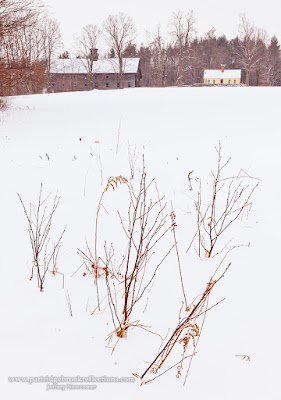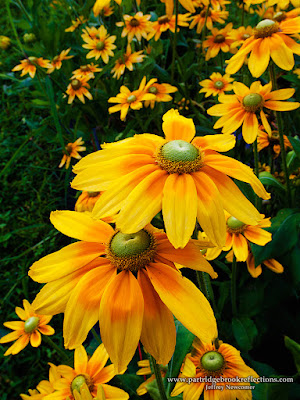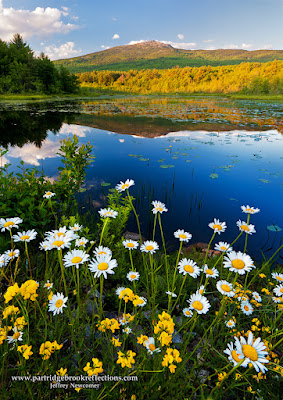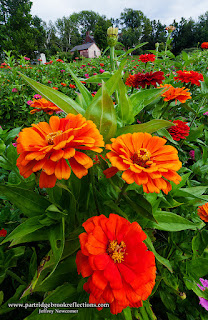 |
| Winters Past |
With yet another fizzled snow storm this weekend robbing us of great photographic material, it seems to be the appropriate time to start what may evolve into a prolonged, multi-episode rant about what it means to get a picture "right in the camera" in the digital age. I have always felt that photographers have the right, even the responsibility to express their art in any way that works best for them. There is no right way to capture, process or present photographic images. It is altogether appropriate for photographers to have their individual preferences regarding the presentation of photographs, but when they express this they do so only as a small part of the audience and not as someone with special sensibilities or taste.
Photographic Purity
It seems less common recently, but we still hear photographers,
 both film and digital, proudly describe their method as "getting it right in the camera", implying that those of us who process our images somehow are being lazy and sloppy, not bothering to do the work in the field to get the best image. Their "unprocessed" images are portrayed as somehow a purer reflection of the natural experience. It is my contention that the use of programs such as Photoshop merely provide another set of tools which do not replace, the careful in-field adjustments of exposure, focus and shutter, and composition but allow for better control of the final image. When I think of the often derogatory term "fixing it in Photoshop" I think of the wonderful opportunity that digital processing provides to get around the limitations that any mode of image recording has when trying to mimic what our marvelous eyes can perceive. For me, the best way I can honor the images which I carefully collect is to do everything I can at home as well as in the field to draw out the picture’s full potential, to come the closest I can to what I saw, AND felt in the field.
both film and digital, proudly describe their method as "getting it right in the camera", implying that those of us who process our images somehow are being lazy and sloppy, not bothering to do the work in the field to get the best image. Their "unprocessed" images are portrayed as somehow a purer reflection of the natural experience. It is my contention that the use of programs such as Photoshop merely provide another set of tools which do not replace, the careful in-field adjustments of exposure, focus and shutter, and composition but allow for better control of the final image. When I think of the often derogatory term "fixing it in Photoshop" I think of the wonderful opportunity that digital processing provides to get around the limitations that any mode of image recording has when trying to mimic what our marvelous eyes can perceive. For me, the best way I can honor the images which I carefully collect is to do everything I can at home as well as in the field to draw out the picture’s full potential, to come the closest I can to what I saw, AND felt in the field.Enough religion. My point here is that as a "Photoshoping"
 photographer my goal for getting an image "right in the camera" is very different from those who take what they can get directly from the camera. Ansel Adams said it best in his often quoted contention that the negative is the score and the print the performance. In digital photography the image file is the score and the best score is the image or images that provide the information which will allow the fullest potential for the post-processing "performance". The best digital image directly from the camera is often not the best looking and only shows its beauty when its potential is drawn out through the magic of the digital darkroom. When faced with a photographic challenge I only feel I have done my best when I have used all the tools that I have available. This includes getting the best image in the camera but also devoting the time at home to bring that image to its best performance.
photographer my goal for getting an image "right in the camera" is very different from those who take what they can get directly from the camera. Ansel Adams said it best in his often quoted contention that the negative is the score and the print the performance. In digital photography the image file is the score and the best score is the image or images that provide the information which will allow the fullest potential for the post-processing "performance". The best digital image directly from the camera is often not the best looking and only shows its beauty when its potential is drawn out through the magic of the digital darkroom. When faced with a photographic challenge I only feel I have done my best when I have used all the tools that I have available. This includes getting the best image in the camera but also devoting the time at home to bring that image to its best performance.To highlight this fundamental difference in approach, I plan to do a series of articles about the how digital photography has expanded our options for managing the factors that contribute to an outstanding image that fully expresses our own personal vision. Whether it is exposure, focus, color management, or coping with special challenges such as low light, the techniques available today provide an amazing degree of flexibility and control that has fundamentally altered what it means to "get it right in the camera". Let’s start with focus and I promise in the future I will leave out the lofty sermon.
Focus
The Problem
Back in the days when I was shooting with film I often shot bracketed images, but then it was almost always to assure
 |
| Dummerston Bridge, Vermont |
The Digital Solution
 With digital photography the depth of field problem can often be solved by bracketing focus with several images. When I arrived at Perkins Pond in Troy New Hampshire the evening light was lovely on Mount Monadnock. I wanted to include the nice foreground flowers, but despite stopping down to f22 I couldn't come close to getting everything in focus, and even with only a light wind, the long exposures that
With digital photography the depth of field problem can often be solved by bracketing focus with several images. When I arrived at Perkins Pond in Troy New Hampshire the evening light was lovely on Mount Monadnock. I wanted to include the nice foreground flowers, but despite stopping down to f22 I couldn't come close to getting everything in focus, and even with only a light wind, the long exposures that the small aperture demanded turned the flowers into a blurry mess. The solution was to open the aperture and take three images focused on foreground, background and a spot in the middle.The result was that I could keep the shutter fast enough to freeze most of the foreground motion. None of the images was the "best I could get from the camera", but together they provided the material I needed to get the best image at the end of the digital process.
Photoshop provides a number of approaches to merging multiple images. In this situation I was able to stack the three
 |
| Focus Layers |
 This simple manual approach works well when the foreground is all at roughly the same distance, but begins to fail when there is more varied range of depth up close. For example when an image with flowers up-front, also has underlying stalks and grass further away, it can be very difficult to get everything sharp. But don't despair. Photoshop has some other tricks that can at least make this challenge manageable.
This simple manual approach works well when the foreground is all at roughly the same distance, but begins to fail when there is more varied range of depth up close. For example when an image with flowers up-front, also has underlying stalks and grass further away, it can be very difficult to get everything sharp. But don't despair. Photoshop has some other tricks that can at least make this challenge manageable. But that is a tale for next week's blog Focus II. In the meantime keep on getting it right in the digital camera.

very helpful , jeff, thank you.
ReplyDeletePat Davis
www.ottercreekphotography.com
I love to shoot both photos and video on my travels, and thus far I’ve always shot them both with one camera. But few still cameras take decent video, and my camera is no exception. It’s time to start shooting some higher quality video…with a Flip!
DeleteI love your blog and your instagram feed